Federal Energy Efficient Product Procurement
By running more efficient lighting, appliances and equipment, federal agencies can cut energy costs, devote more resources to their core missions and operate more sustainably. Meeting these economic and environmental challenges often comes down to what products we buy. Federal agencies have been encouraged or required to buy energy efficient products since the 1970s. Berkeley Lab’s Sustainable Operations (SO) Group studies the dynamics of markets for clean energy technologies, aids federal agencies in meeting their requirements and quantifies the impacts of those procurements.
Our research focuses on:
- Strategies for enhancing uptake of energy efficient products in the public sector
- Pathways and barriers to increasing compliance with federal procurement mandates
- Economic and environmental impacts of purchasing energy efficient products
Learn more about our work and the federal government's pursuit of greater energy efficiency: 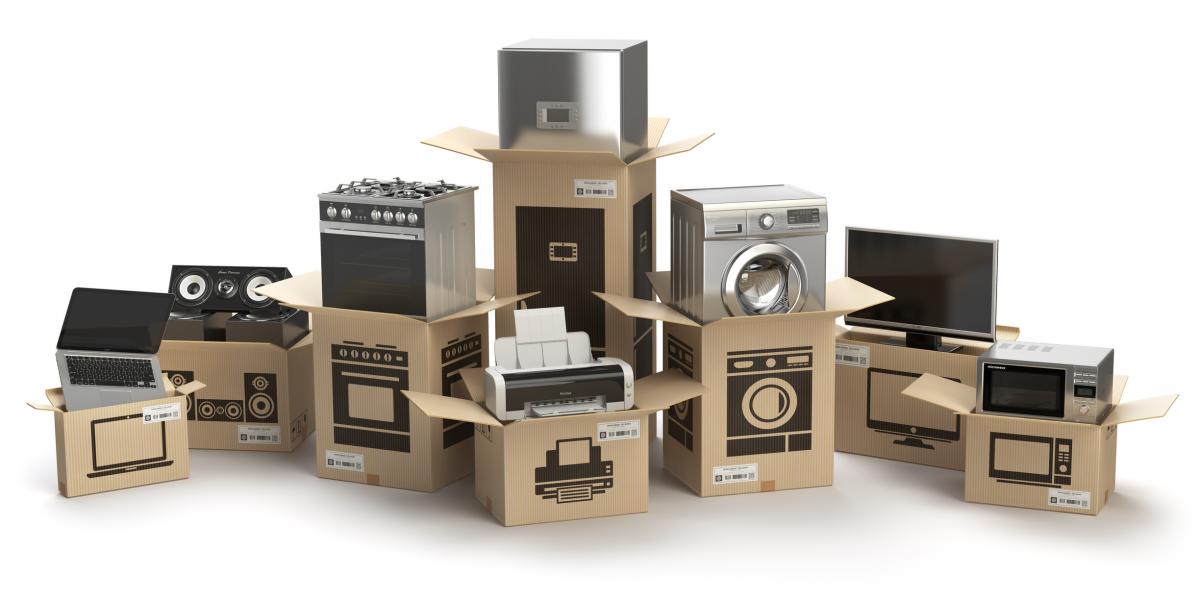
- Background
- Federal Purchasing Requirements for Energy-Using Products
- Purchasing Support Tools
- Solicitation Reviews
- Impact Evaluation
- Publications and Training
- Contact Us
Background
For 30 years, Berkeley Lab and the U.S. Department of Energy (DOE) have worked to increase federal procurement of energy-efficient technologies. In aggregate, the federal government is the largest U.S. purchaser of energy consuming products, with 650,000 vehicles, 350,000 buildings, and a $6 billion annual utility bill. It thus represents large potential for cost savings, reduction of environmental impacts and influence over the availability and price of efficient products for households and businesses. In a recent study, we found that full compliance with federal requirements for buying energy efficient products would achieve more than $300 million dollars in energy savings annually and avoid roughly a million tons of CO2e emissions.

The SO Group works with the Federal Energy Management Program (FEMP) to realize those savings by addressing the challenges that federal agencies face in procuring energy efficient products. We educate and assist federal agencies with market assessments, training, impact evaluations and direct technical support. We also review solicitations for energy consuming products, one of the primary methods by which the federal government can address climate change, to track progress in compliance with federal purchasing requirements.
Federal Purchasing Requirements
 When buying energy-consuming products and services, federal agencies are required by law to buy products that are energy efficient. These laws include statutory requirement 42 USC 8259b and federal acquisition regulations, most recently FAR Clause 52.223-15. They require agencies to purchase energy-consuming products that bear the ENERGY STAR label or are designated by DOE’s Federal Energy Management Program (FEMP) as being in the upper 25% of energy performance among similar products.
When buying energy-consuming products and services, federal agencies are required by law to buy products that are energy efficient. These laws include statutory requirement 42 USC 8259b and federal acquisition regulations, most recently FAR Clause 52.223-15. They require agencies to purchase energy-consuming products that bear the ENERGY STAR label or are designated by DOE’s Federal Energy Management Program (FEMP) as being in the upper 25% of energy performance among similar products.
These laws and regulations date back to the energy crisis of the 1970s. Congress has strengthened those mandates over the decades, and the executive branch has reinforced and provided guidance on achieving those mandates through regulations and executive orders (EOs), most recently EO 14057 on Catalyzing Clean Energy and Jobs Through Federal Sustainability. This recent guidance builds on previous measures to address federal sector emissions through EO 13990 on Protecting Public Health and the Environment and Restoring Science to Tackle the Climate Crisis and EO 14008 on Tackling the Climate Crisis at Home and Abroad.
Through EO 13990, President Joseph R. Biden Jr. prompted federal agencies to revise federal regulations to better align with environmental protection, greenhouse gas reduction and environmental justice goals. With EO 14008, President Biden additionally put forward a policy spurring a government-wide approach to combat the climate crisis, requiring agencies to develop and implement action plans for facilitating water and energy efficiency through procurement.
With EO 14057, President Biden ordered federal agencies to lead the fight against climate change by example, “catalyze private sector investment and expand the economy and American industry by transforming how we build, buy, and manage electricity, vehicles, buildings, and other operations to be clean and sustainable.”
EO 14057 requires federal agencies to reduce procurement emissions to net-zero by 2050 through the following actions:
- Purchase products that contain recycled products, are biobased, or are energy and water efficient, in accordance with relevant statutory requirements
- Maximize environmental benefits and cost effectiveness of procurement by basing “best value” determinations on full life-cycle costs
- To the maximum extent practicable, purchase sustainable products and services identified or recommended by the Environmental Protection Agency
- Ensure compliance and alignment of internal policies, procedures and training with government-wide sustainable procurement policy
Key legal authorities and associated federal and Berkeley Lab responses are illustrated in the timeline below.

Purchasing Support Tools
Our resources and tools help federal and state agencies meet energy efficiency purchasing requirements. We provide:

- A table of energy-efficient products where purchasing officers can find energy-consuming products that meet federal requirements and so are approved under ENERGY STAR, the Electronic Product Environmental Assessment Tool (EPEAT) or FEMP designation for energy performance
- A quick guide - Paths to Energy Efficiency Requirements or PEER - that provides links to the energy efficiency requirements and resources that can help you comply for a particular product or service
- Contract language templates designed as easy “copy-and-paste” language for federal agencies to use in their solicitations and contracts for energy-consuming products
- Best practices for solicitations of compliant products through Contracting for Efficiency: A Best Practices Guide for Energy-Efficient Product Procurement
- Technical assistance to guide federal agencies through the energy efficient product procurement process
Contact team members below by email or reach out to the group directly for any program-related questions at SustainableOps@lbl.gov
Solicitation Reviews
When a federal agency wants to buy a specific product or service, the agency issues a solicitation with specific requirements for businesses bidding for the contract. The SO Group reviews federal solicitations annually to assess compliance and identify obstacles with purchasing energy efficient products. Our reviews focus on solicitation language that requests energy efficient products. At a minimum, that language should cite FAR Clause 52.223-15, which requires the purchase of those products. We conduct both automated and manual reviews of federal solicitations and classify compliance as shown below.
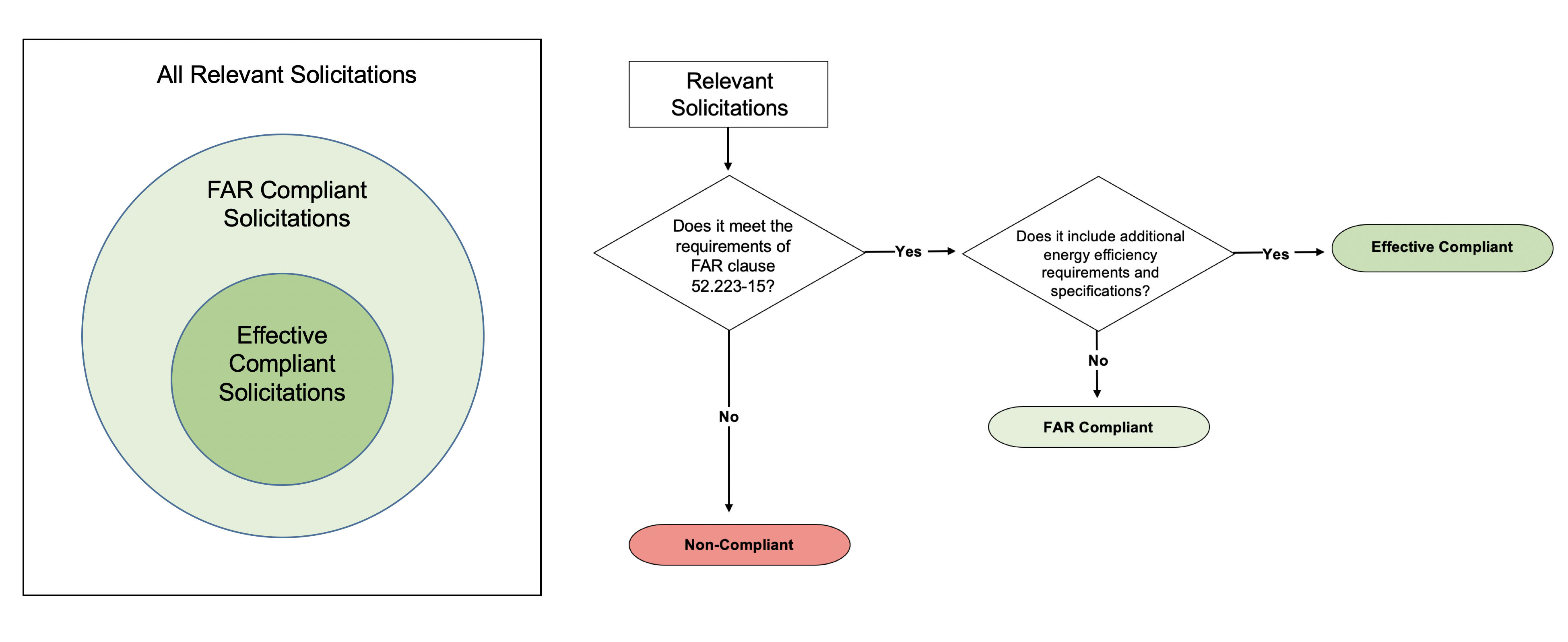
We review solicitations for all energy-consuming products and categorize them as either non-compliant or compliant. Non-compliant solicitations do not mention energy efficiency or efficiency requirements Compliant solicitations can be further divided into FAR compliant and effective compliant. FAR compliant solicitations only include FAR clause 52.223-15 and no additional energy efficiency requirements or specifications. Effective compliant solicitations are more explicit and more likely to result in purchases of energy efficient products.
Federal agency compliance rates for meeting requirements on purchasing energy efficient products vary both among, and within federal agencies. The graph below shows the number of compliant solicitations differs among departments.
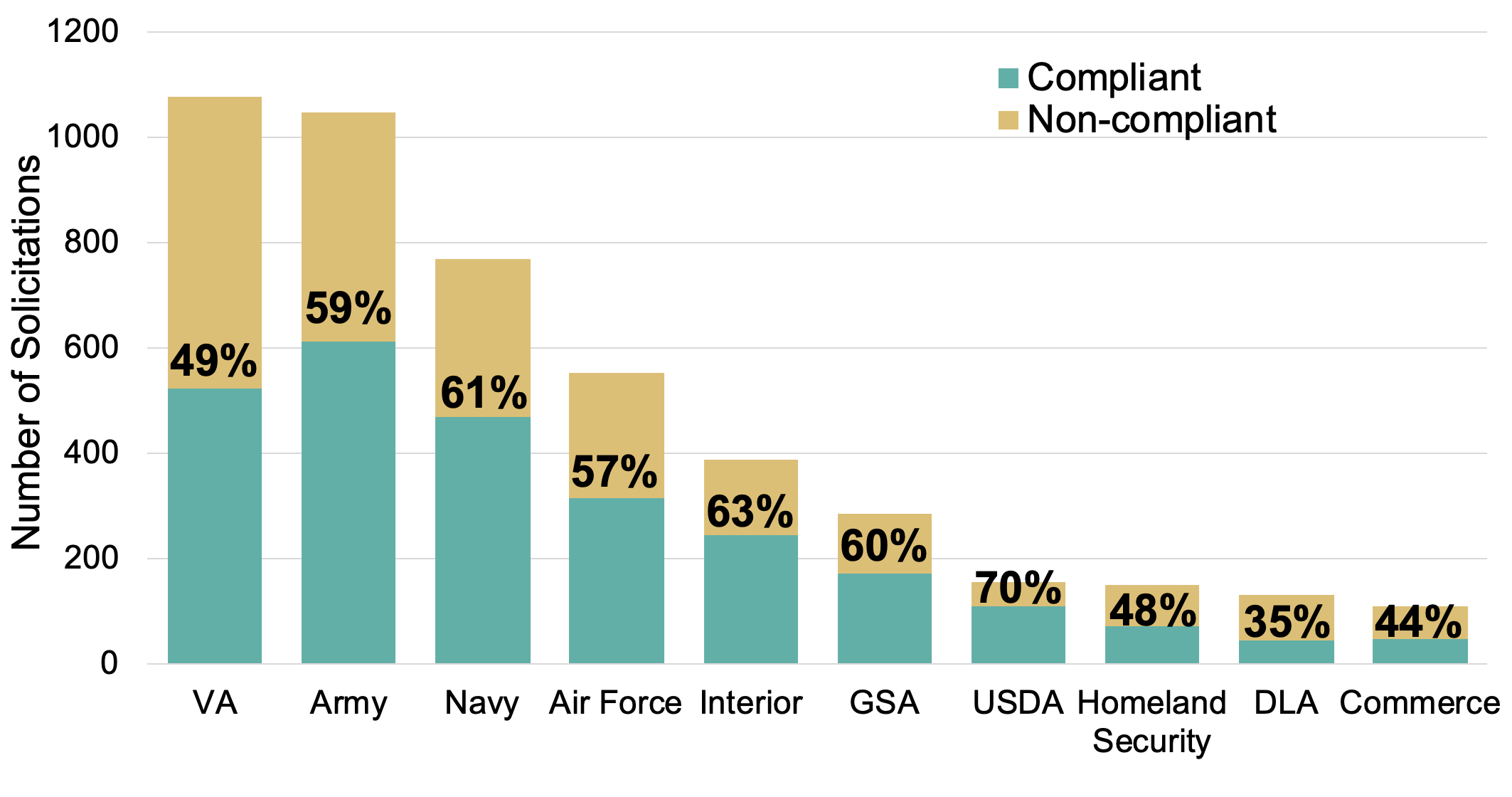
Offices within departments had a high level of variability in compliance. The chart below shows compliance rates for 10 federal offices that issue the most solicitations.
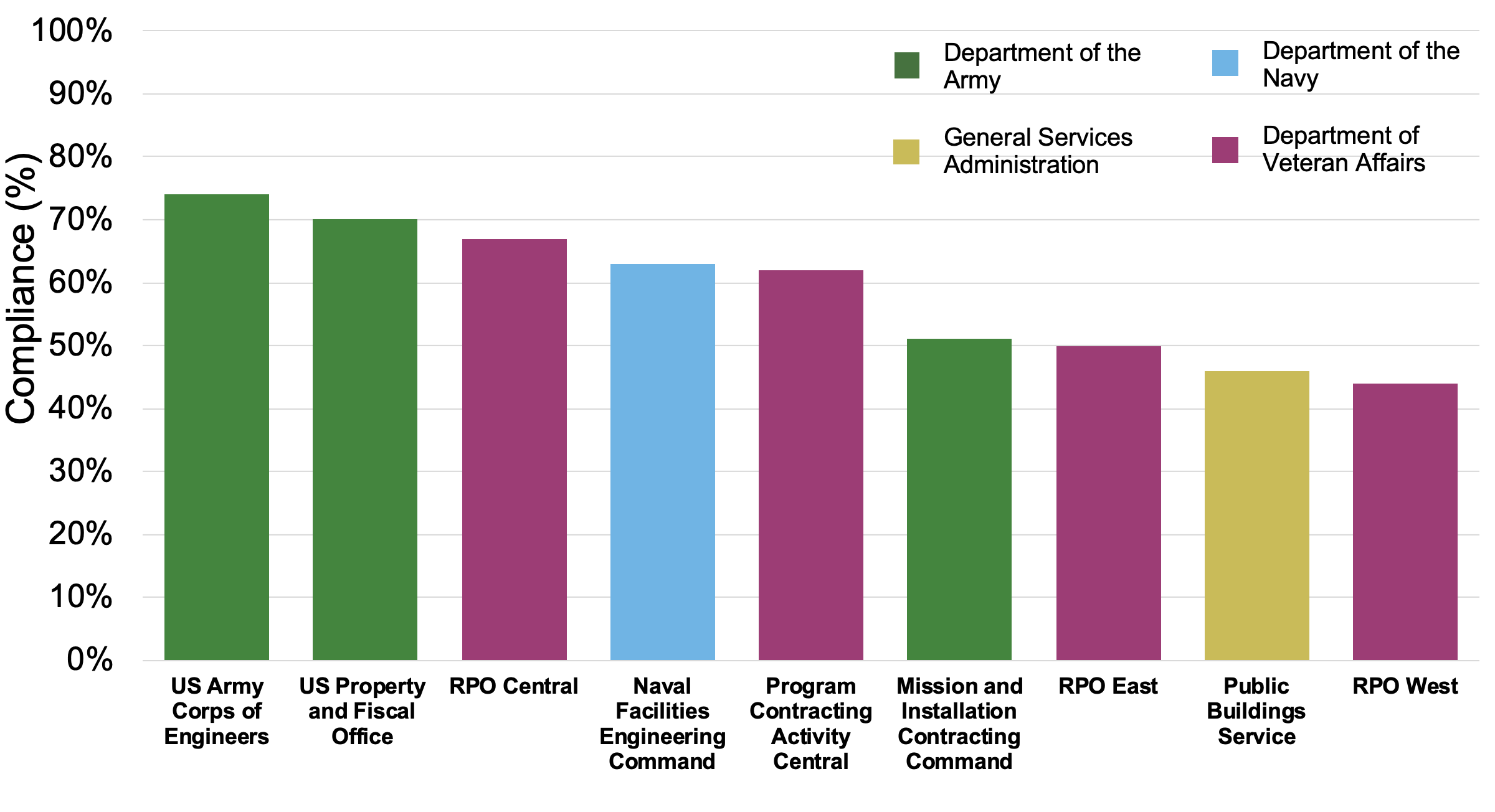
Federal compliance rates also vary by the nature of the contracting arrangement. The graph below shows compliance rates from FY15 to FY22 for direct and indirect solicitations. Direct solicitations (blue) are federal requests for vendors to bid on supplying specific products to the government. With indirect solicitations (purple), a contractor is empowered to decide what products to acquire on behalf of the government (e.g., through a maintenance contract). The government remains the ultimate customer for the energy-using products and pays the energy bill, so the requirement to buy energy-efficient products holds in both direct and indirect solicitations.
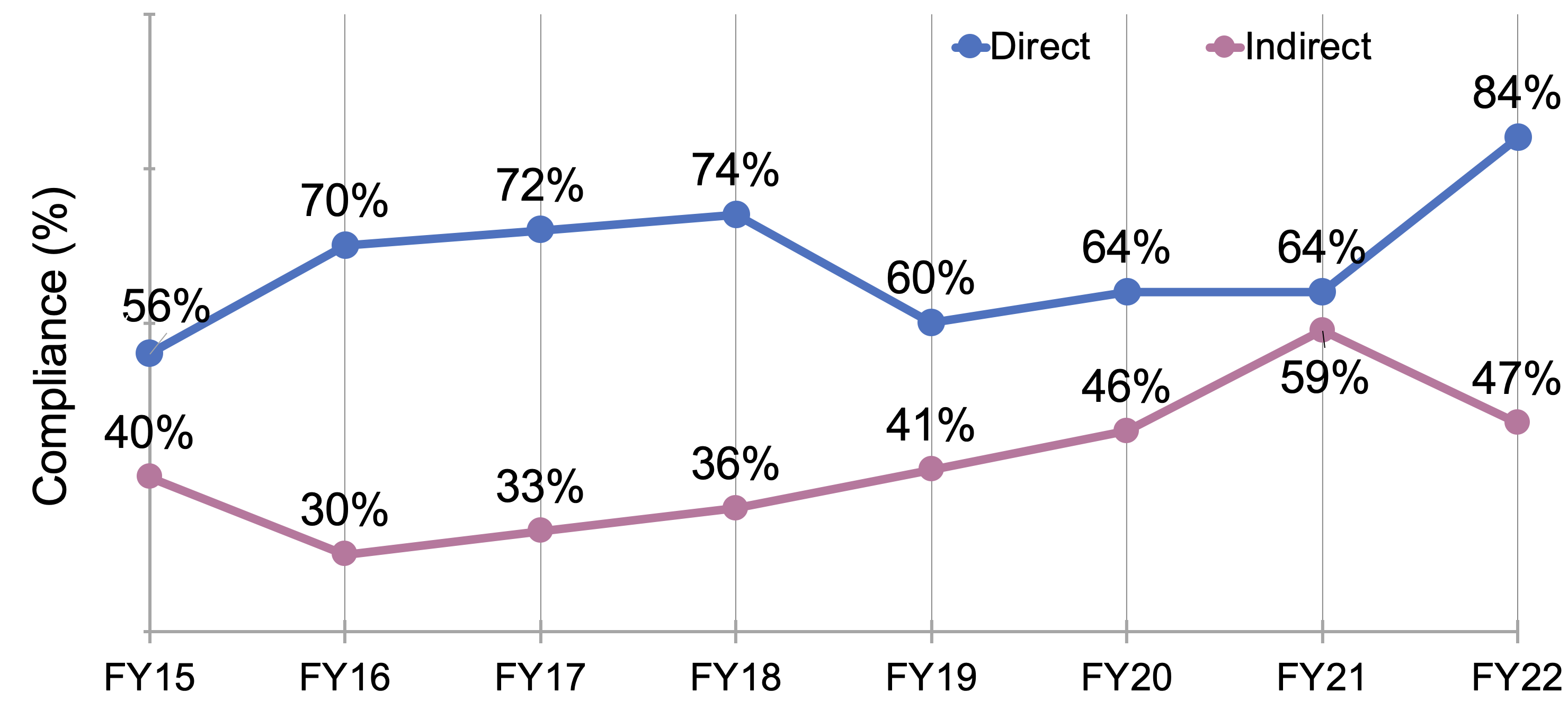
Our reviews indicate that federal agencies sometimes overlook or otherwise miss opportunities to include language that specifies energy efficient products in indirect solicitations, hence the comparatively lower compliance rates for indirect solicitations shown in the graph. Increasing compliance rates could create an opportunity for substantial energy savings since indirect solicitations constitute more than half of the solicitations reviewed between 2015-2022.
Although compliance rates vary depending on agency, office and type of solicitation, average FAR compliance has increased 12% and effective compliance has increased by 10% over the last seven years. Annual updates to this review help us to better understand the effectiveness of policy changes, training and resources to support energy efficient procurement.
Impact Evaluation
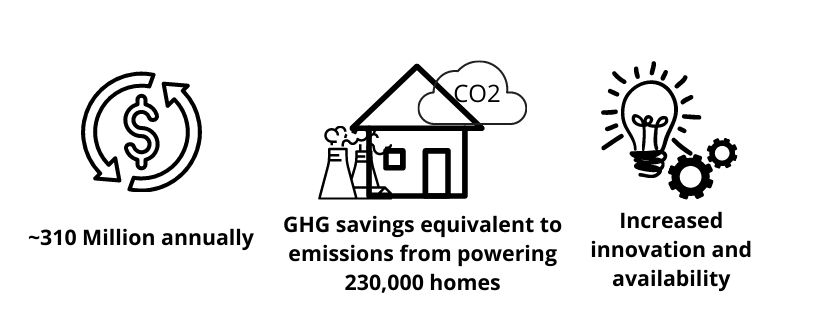
Berkeley Lab has published multiple studies reporting significant energy cost savings and GHG emission reductions the federal government can achieve by complying with energy efficiency requirements. The latest analysis by the SO Group estimates that by fully complying with energy efficiency purchasing requirements, the federal government can see overall operational cost savings of about $310 million and 1.3 million CO2 equivalent metric tons of emissions saved every year.

Since the start of the century, the federal government could have saved $4.8B by fully complying with federal energy efficient purchasing requirements. The SO Group will continue to work to evaluate the impact energy efficient product procurement can have within the federal government in the coming years.
Publications
The SO Group has contributed a large collection of studies, reports, and training around energy efficient product procurement. Many of our resources are intended for federal agencies but can be applicable to other public and private organizations.

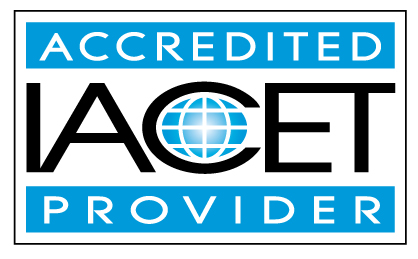 FEMP IACET: 0.2 CEU
FEMP IACET: 0.2 CEU
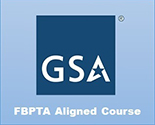 0.2 CEU
0.2 CEU